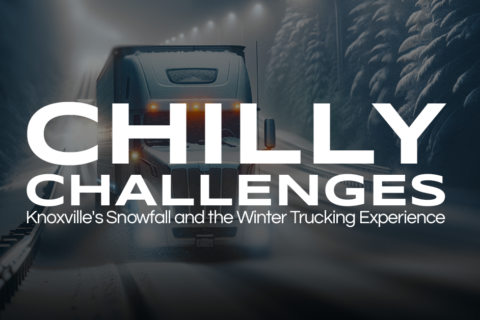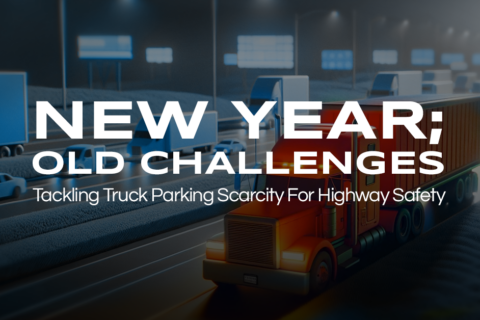Distraction Danger: The Alarming Truth About Multitasking
📜 The Myth of Multitasking: Stay Focused for Success In the rush of our modern world, distractions are everywhere. Multitasking is often seen as the solution, but is it real? Real? What do you mean? We multitask all the time… right? Well, here’s the truth: multitasking is a myth. Studies have shown that the human brain isn’t wired to handle more than one task at a time effectively. Whether you’re driving a vehicle or managing responsibilities at work, trying to split your focus can lead to costly mistakes, decreased productivity, and increased risk. Instead of juggling tasks, it’s crucial to prioritize focus and avoid distractions to enhance safety and performance. Let’s explore key strategies for keeping your attention where it needs to be. 🔍 Why Focus Wins Every Time You likely know better than to believe everything you hear—and that’s a great instinct! So, when we tell you that multitasking isn’t real, it’s natural to feel a bit skeptical. After all, it’s a common belief that juggling multiple tasks makes us more efficient. But instead of just taking our word for it, let’s back it up with research. Below, we’ve gathered three compelling studies conducted by top experts in the field that prove once and for all why multitasking is more myth than reality. The next time you’re tempted to multitask, remember these findings: focused attention not only boosts your productivity but also improves your performance. Instead of splitting your energy, prioritize one task at a time to see better results and reduce errors. Keep this in mind whether you’re driving, working, or managing daily responsibilities, and watch how your efficiency improves! 🚦 Top 5 Tips for Driving Through Distraction From the constant temptation to check your phone to seemingly harmless habits like grabbing a snack while driving, distractions behind the wheel can lead to serious consequences. Staying focused is key to ensuring your safety and that of others on the road. Let’s dive into practical tips to help you avoid distractions, sharpen your concentration, and maintain safety every mile of the way. By actively avoiding distractions and focusing on one thing at a time, you can improve both safety and productivity in your daily routine. Remember, it’s not about doing more; it’s about doing things better. Keep your focus sharp, and success will follow! 🚧 5 Distractions to Avoid in the Workplace Staying focused on the job is crucial, especially in environments like warehouses or manufacturing where even a momentary lapse in attention can lead to serious accidents or injuries. Distractions can slow productivity, increase mistakes, and put you and your coworkers at risk. In this section, we’ll cover the most common distractions to avoid while working, along with some simple tips to help you stay on task and stay safe. Let’s break down the top five distractions you should watch out for. Staying free from distractions isn’t just about productivity—it’s about safety. By staying focused and aware of your surroundings, you’ll help create a safer work environment for yourself and your colleagues. Stay alert, stay sharp, and make your workplace distraction-free! 🎯 Wrapping It Up: Focus for Success and Safety Staying focused and avoiding distractions, whether on the road or at work, isn’t just about getting more done—it’s about working smarter and safer. We’ve explored why multitasking is a myth and broken down key strategies to help you prioritize focus and minimize mistakes. From the research behind task-switching to practical tips for staying distraction-free, these insights are essential for improving performance in any job. We’d love to hear your experiences! Have you struggled with distractions or found effective ways to stay focused? Share your thoughts in the comments below—let’s keep the conversation going. Don’t forget to check back next week for more tips from Optimum Staffing Solutions on how to stay sharp and safe in the workplace. Stay focused, stay safe, and see you next week! Ready to shift your career into high gear? Optimum Staffing Solutions offers a world of opportunities designed to match your ambitions. Whether you’re a veteran CDL driver looking for new roads to conquer, an aspiring recruiter, or an industrial professional eager to innovate in manufacturing, we are here to guide your journey. Picture yourself thriving in roles that range from machine operation and production to leadership and administration. Imagine being part of a team where logistics and warehouse experts, including dispatchers, inventory specialists, and operations managers, work seamlessly to create unparalleled efficiency. Your next career move isn’t just a job; it’s a pathway to success. Join us and let’s drive towards a brighter future together! 🔎 For Businesses Seeking Top-Notch Talent: Finding the right talent can be as complex as navigating the busiest intersections, but Optimum Staffing Solutions simplifies the journey. We are your trusted partner in connecting your business with professionals who excel in their fields and are passionate about driving your success. Whether you need skilled CDL drivers to navigate critical routes, machine operators to maintain production flow, payroll administrators to manage financial efficiency, or healthcare professionals to deliver exceptional patient care, we have you covered. Our curated talent pool includes IT specialists to fortify your tech infrastructure, retail managers to transform customer experiences, and construction project managers ensuring quality infrastructure. With tailored solutions that perfectly fit your business needs, explore our comprehensive staffing services today and discover how we can help keep your operations running smoothly and efficiently. If you’re in search of a role, be sure to check out our open positions. Additionally, if you need direct hire staffing solutions for commercial driving or industrial positions, be sure to explore our offerings. We extend our heartfelt thanks to you for engaging with this post. Safe travels and successful ventures to all our readers. Whether you’re hitting the road or mastering the craft on the manufacturing floor, remember, Optimum Staffing Solutions is here to support your journey every mile and milestone of the way. If you made it to this part of the post, we’d just like to…











Recent Comments